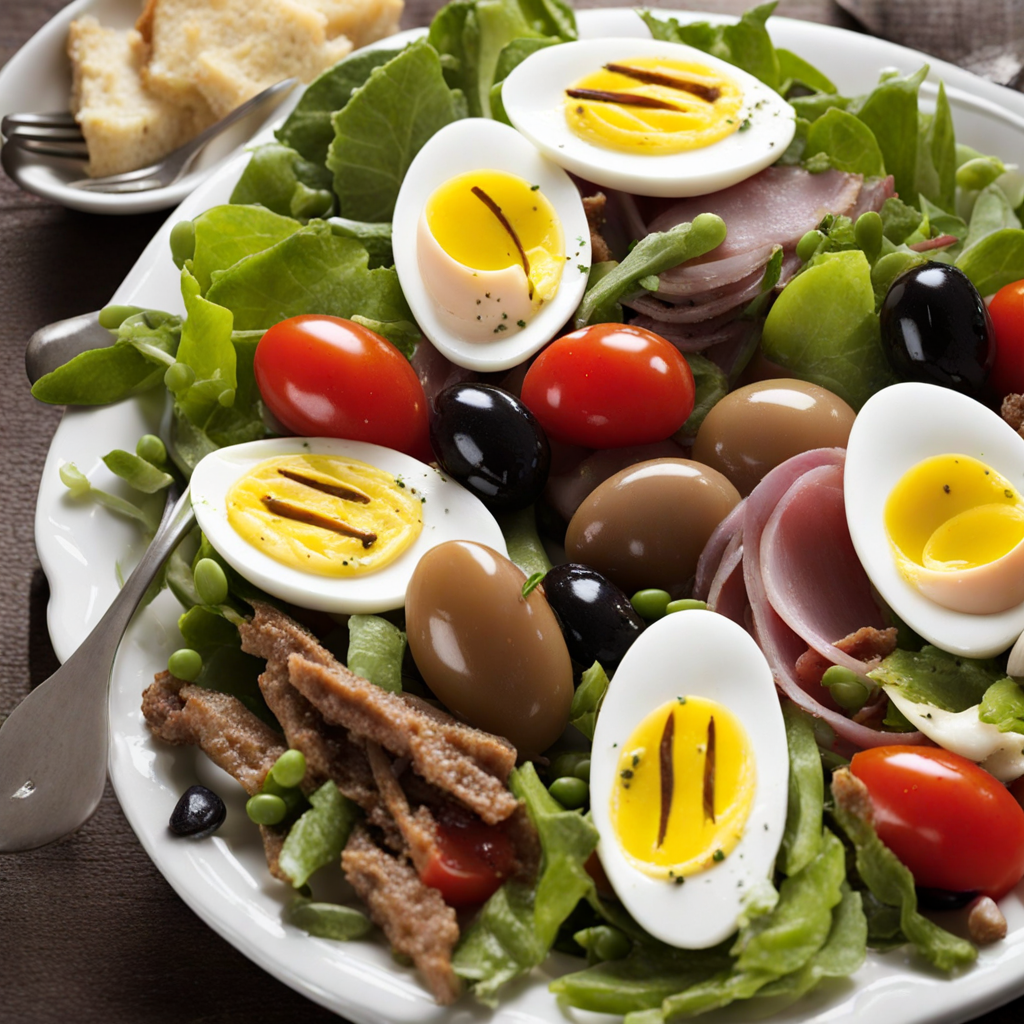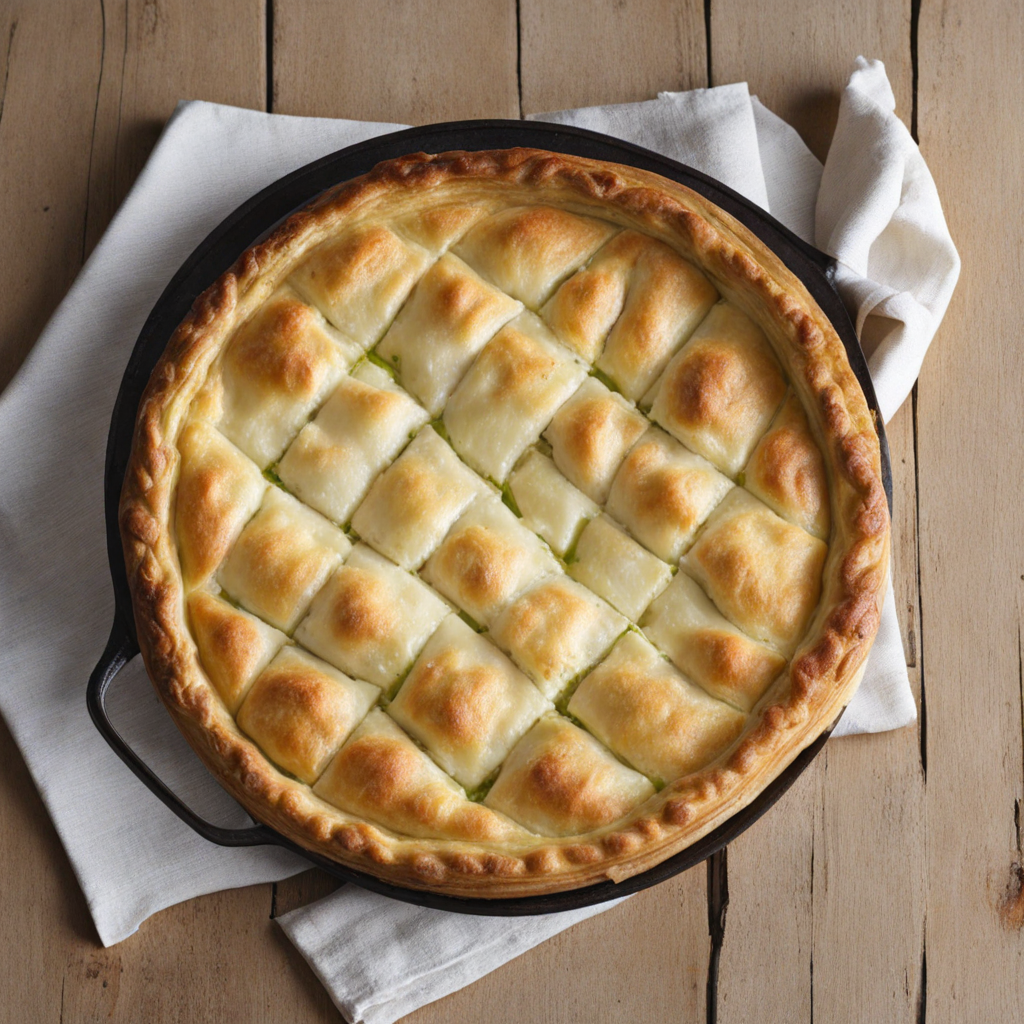Nicoise Salad
Nicoise Salad is a vibrant and refreshing dish originating from the sunny region of Nice, France. This salad beautifully encapsulates the essence of Mediterranean cuisine, featuring a harmonious blend of fresh ingredients that highlight the region's rich agricultural bounty. At its core, the salad typically includes crisp green beans, ripe tomatoes, and creamy potatoes, all of which are often combined with black olives and hard-boiled eggs. Each component not only adds to the visual appeal but also contributes unique textures and flavors, creating a delightful and satisfying meal. One of the signature elements of Nicoise Salad is its use of high-quality olive oil, which ties the dish together with a luscious and fruity richness. Alongside the olive oil, a drizzle of red wine vinegar or a squeeze of fresh lemon juice adds a tangy brightness, elevating the overall taste experience. This combination of ingredients can be easily customized, allowing for the inclusion of tuna—often served fresh or canned—which is a hallmark of the dish, providing a delightful seafood note that enhances the freshness of the vegetables. Eating a Nicoise Salad is not just about satisfying your hunger; it’s an experience that transports you to the sun-kissed shores of the French Riviera. The burst of flavors from each ingredient, the crunch of the vegetables, and the creaminess of the eggs create a symphony of taste that is both invigorating and comforting. Whether enjoyed as a light lunch or a vibrant side dish, Nicoise Salad is a perfect way to savor the spirit of France, celebrating fresh produce and simple yet exquisite culinary traditions.
How It Became This Dish
The Engaging History of Salade Niçoise Salade Niçoise, a vibrant and colorful salad, is one of the quintessential dishes of French cuisine, particularly associated with the sun-kissed region of Nice, located on the French Riviera. This dish, brimming with fresh ingredients, tells a story that is as rich and varied as its flavors, reflecting the culture and culinary traditions of southeastern France. #### Origins and Early Influences The roots of Salade Niçoise can be traced back to the Mediterranean, where fresh vegetables, seafood, and olive oil have long been staples of the diet. The city of Nice, situated on the coast, has a history that dates back to ancient Roman times, and its culinary practices have evolved significantly over the centuries, influenced by various cultures, including Italian, Provençal, and even Arab cuisines. The earliest mentions of a salad resembling today’s Salade Niçoise date back to the 18th century. However, it is generally believed that the dish as we know it today emerged in the early 20th century. It is noteworthy that the term "Niçoise" refers not only to the salad but also to a style of preparation and a way of life in Nice, encapsulating the idea of fresh, local ingredients prepared simply yet elegantly. #### Cultural Significance Salade Niçoise is more than just a dish; it embodies the essence of the Mediterranean lifestyle, which emphasizes fresh, seasonal ingredients and communal dining. In the bustling markets of Nice, vibrant displays of tomatoes, green beans, olives, and aromatic herbs tempt passersby, inviting them to create their own versions of this beloved salad. The salad is often associated with the local identity of Nice. In 1910, the famous French chef Auguste Escoffier included a version of Salade Niçoise in his cookbook, which helped popularize it beyond the borders of Provence. Escoffier’s version included ingredients like tuna, hard-boiled eggs, and anchovies, which are now seen as standard components of the dish. Moreover, the salad reflects the changing cultural landscape of Nice. The city has historically been a melting pot of different cultures, influenced by waves of Italian migration and later by tourists from around the world. Each group added its twist to the traditional recipe, leading to a myriad of variations that celebrate the local ingredients and tastes. #### Development Over Time As the 20th century progressed, Salade Niçoise gained prominence not only in France but also internationally. The dish became synonymous with French bistros and cafés, where it was served as a light lunch or appetizer. However, the recipe has undergone significant transformations, particularly in the latter half of the century, as culinary trends shifted towards health-conscious eating and globalization introduced new ingredients. In the mid-20th century, the salad’s form began to diversify. While traditionalists often argue for a classic interpretation featuring raw vegetables, tuna, anchovies, and hard-boiled eggs, contemporary variations have introduced new elements, such as bell peppers, artichokes, and even quinoa in some modern takes, reflecting a more global palate. Some chefs have even opted to serve the salad with a vinaigrette dressing rather than the traditional olive oil and vinegar, further showcasing the dish's adaptability. The popularization of the Mediterranean diet in the 1980s and 1990s also played a significant role in Salade Niçoise’s rise in popularity. As health-conscious eaters sought lighter, more nutritious meals, the salad's reliance on fresh produce, lean proteins, and healthy fats made it a favorite among many. #### Understanding the Ingredients A quintessential Salade Niçoise is assembled from a variety of fresh ingredients that speak to the region's agricultural bounty. The core components typically include: 1. Tomatoes: Juicy and ripe, they form the base of the salad, providing a burst of flavor and color. 2. Green Beans: Blanched to retain their crispness, they add texture and a nice crunch. 3. Olives: Niçoise olives, small and dark, are preferred for their rich and slightly bitter flavor. 4. Tuna: Often canned, the tuna brings a savory depth to the dish. Fresh tuna can also be used for a more upscale version. 5. Hard-Boiled Eggs: Sliced and placed atop the salad, they provide creaminess and additional protein. 6. Anchovies: While some versions omit them, traditionalists argue that anchovies are essential for the authentic Niçoise experience. 7. Herbs: Fresh basil and parsley are often used to elevate the flavor profile. The dressing typically consists of high-quality olive oil, balsamic vinegar or red wine vinegar, Dijon mustard, salt, and pepper. Some chefs also incorporate garlic or shallots for added depth. #### Contemporary Interpretations In the 21st century, Salade Niçoise continues to evolve. Chefs around the world experiment with this classic dish, infusing it with local ingredients and personal flair. In some places, you might find grilled chicken or avocado added, while others might forgo the fish altogether for a vegetarian or vegan version. The salad’s association with healthy eating and the Mediterranean diet has kept it relevant in culinary discussions, making it a popular choice in restaurants and at home. Food bloggers and chefs alike share their variations online, showcasing the salad’s versatility and ability to adapt to various dietary preferences. #### Conclusion Salade Niçoise is much more than a simple salad; it is a culinary emblem of the Mediterranean lifestyle, reflecting the rich history and cultural significance of Nice. From its humble beginnings in the markets of Provence to its status as a beloved dish in bistros worldwide, it captures the essence of fresh, simple, and vibrant cooking. As it continues to evolve with the times, Salade Niçoise remains a celebration of local ingredients and the joy of sharing food with others—a timeless dish that is truly reflective of the region and its people.
You may like
Discover local flavors from France







